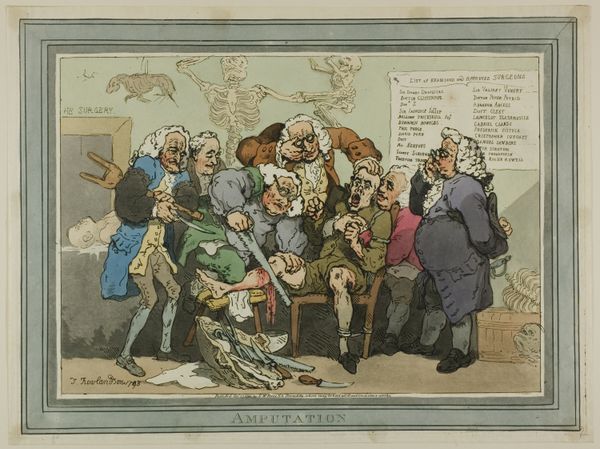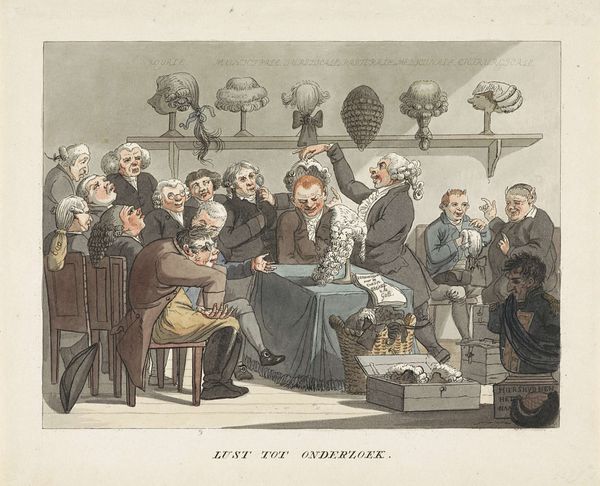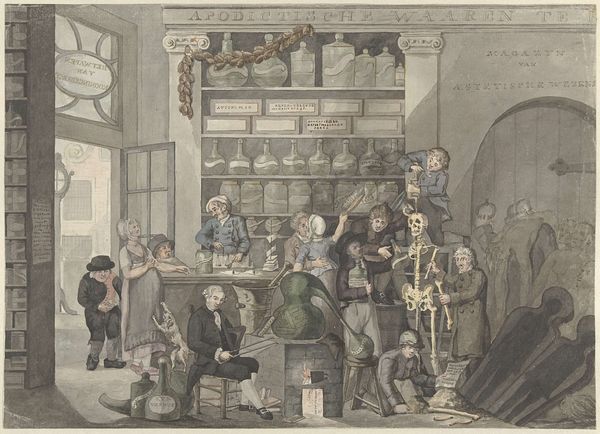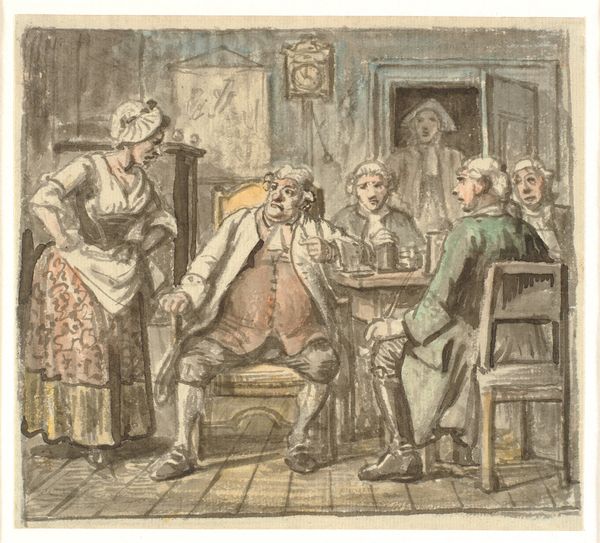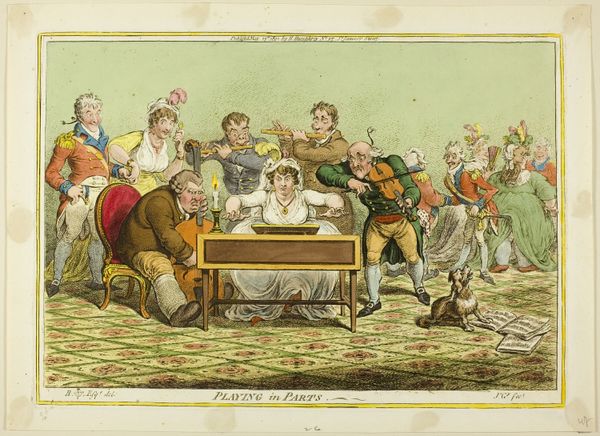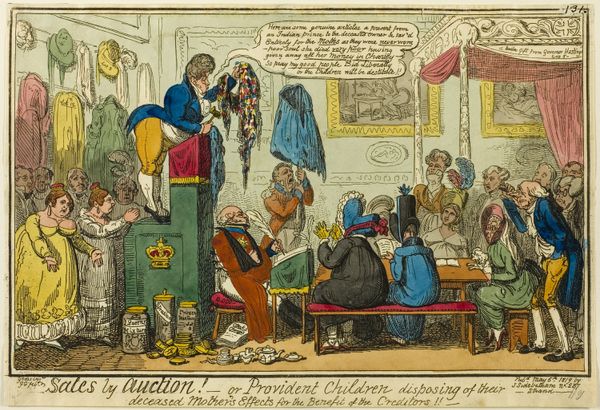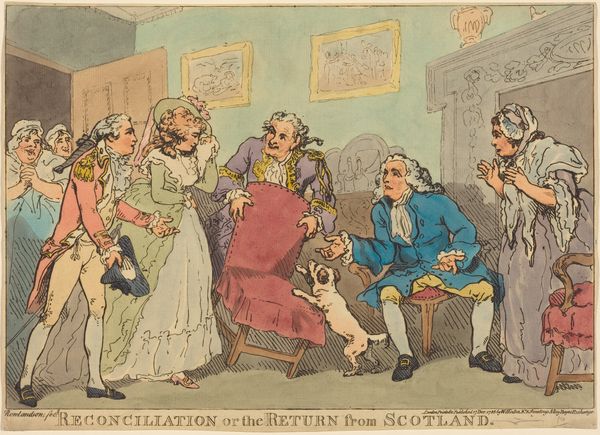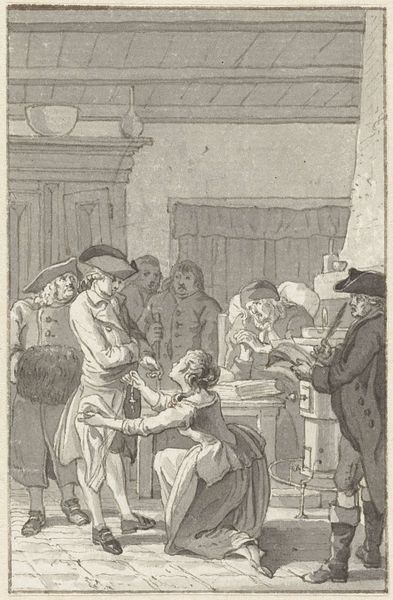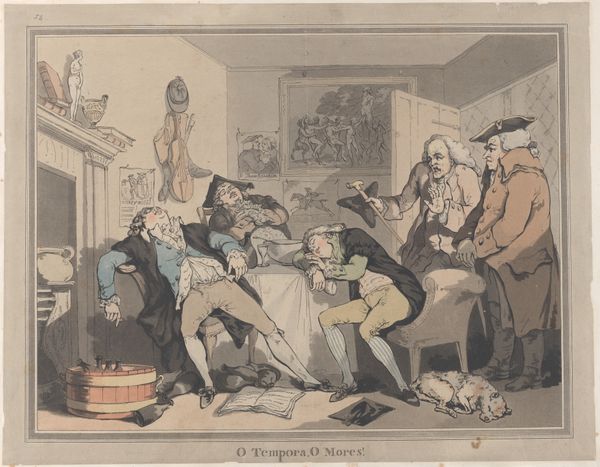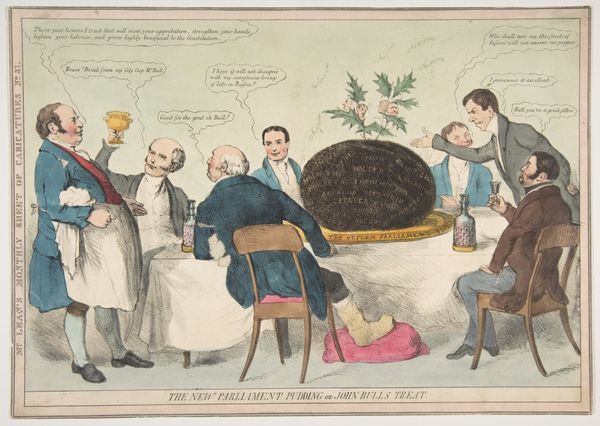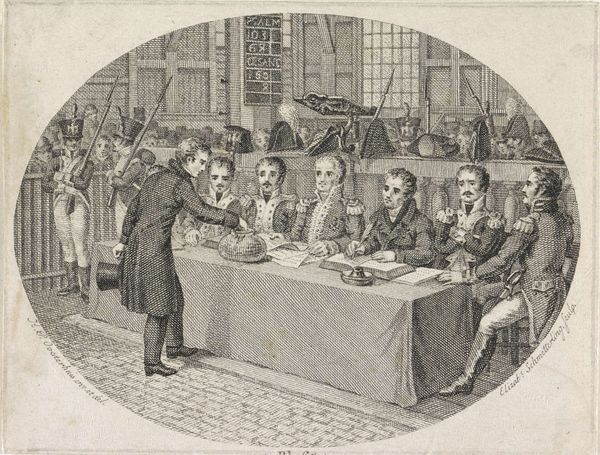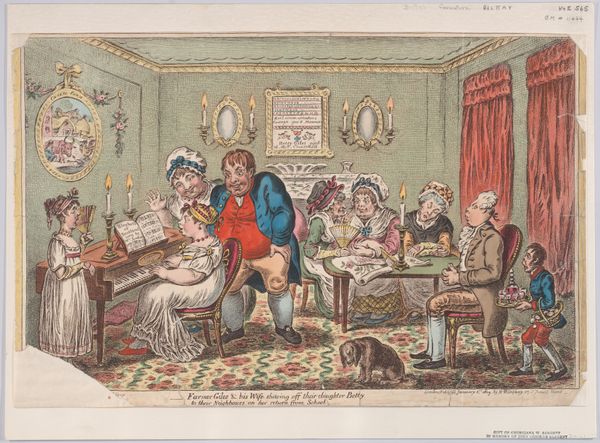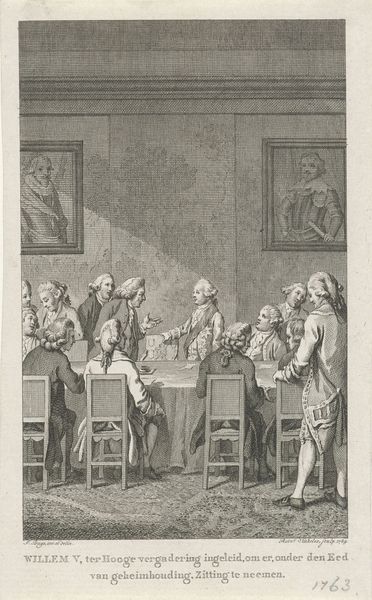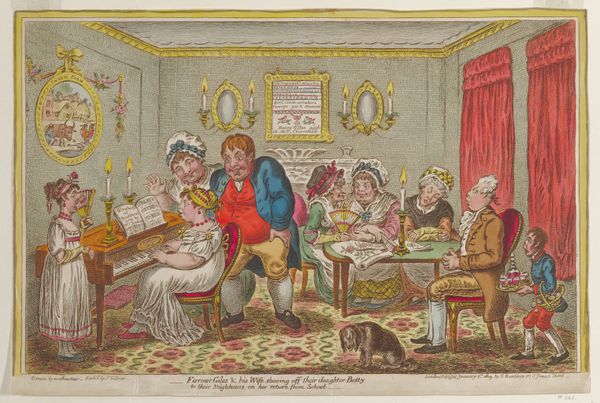
etching, watercolor, ink, pen, engraving
#
imaginative character sketch
#
etching
#
caricature
#
watercolor
#
ink
#
character sketch
#
romanticism
#
pen
#
genre-painting
#
history-painting
#
academic-art
#
cartoon carciture
#
engraving
Dimensions: height 165 mm, width 220 mm
Copyright: Rijks Museum: Open Domain
Curator: Welcome. Here we have “Mannen die pruiken passen,” or "Men Fitting Wigs," a watercolor, pen and ink drawing created circa 1800-1805 by Jacob Smies, currently residing here at the Rijksmuseum. Editor: It’s… certainly lively. The faces are so expressive, almost grotesquely so. There’s a theatrical energy that immediately grabs you. Curator: Absolutely. Smies uses line and wash to great effect, delineating each character with precision while maintaining a sense of overall movement. The composition leads the eye from the cluster of faces on the left to the central wig fitting. Observe how the shelf of displayed wigs above mimics and amplifies the variety of expressions below. Editor: It speaks to a time of powdered artifice and social hierarchy. These aren’t just wigs; they're symbols of power, status, and belonging, or lack thereof. You've got labels like “Royal”, “Magistratical”, even “Surgical,” hinting at the performative roles men had to adopt in that period. It almost feels like a critique of societal expectations, revealing the ridiculousness inherent in such constructed identities. The exaggerated features definitely heighten that reading. Curator: I see your point about societal critique. I appreciate how the arrangement— the balanced asymmetry if you will, between the focused activity in the center and the onlookers— creates a pictorial dynamic. And how he varies the ink washes for contrast…it elevates the etching process from simple reproduction to a medium of fine art. Editor: I am curious about the power dynamic, too. Consider the man having the wig fitted—his head is practically a blank slate, an emptiness that’s then filled, defined by the chosen headpiece. And then there's the vendor wielding the wig; it is very performative, isn’t it? It shows how external forces were shaping, and sometimes distorting individual identity. The bust at the bottom right adds an air of aspiration and ambition. Curator: Precisely. A small element in the greater design. It’s the balance between such precise rendering and broader narrative context that makes this such a compelling example of period caricature. Editor: A clever convergence of technical execution and biting social commentary. It has been really rewarding to peel back its layers today.
Comments
No comments
Be the first to comment and join the conversation on the ultimate creative platform.
